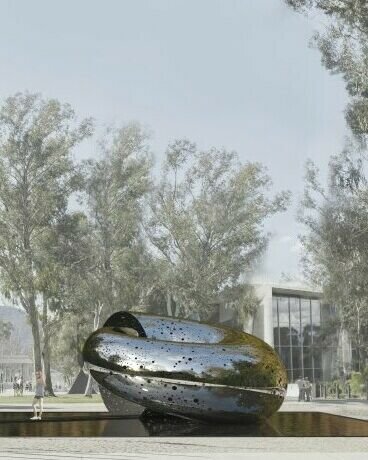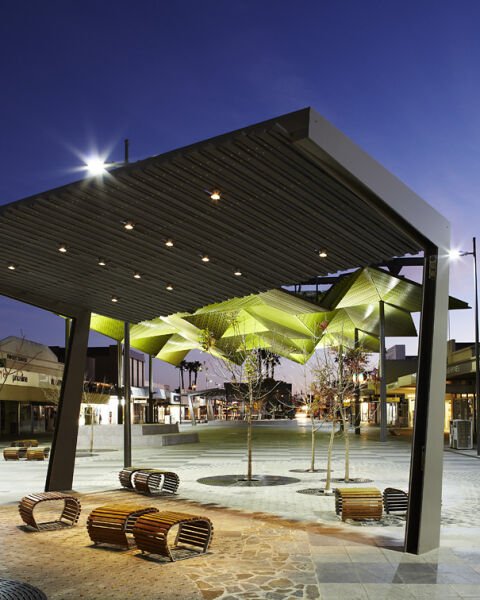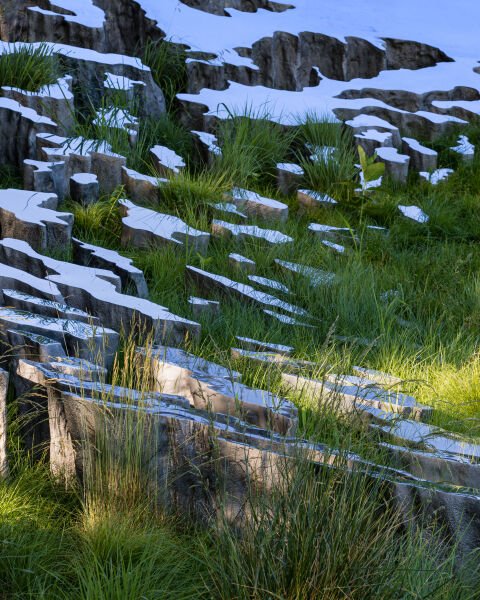Shaping Sustainability in Art Making with the Artwork Ingredient List
by Gilbert Guaring

In 2010, The Guardian explored the intricate web of environmental impacts through their Green Living blog, offering estimates for everyday activities like consuming a banana, drinking coffee, manufacturing a four-door sedan or sending emails. The concept of a "carbon footprint" emerged as a metaphor, encapsulating various entities' comprehensive climate change influence, be it an activity, an object, a lifestyle, or even an entire country.
Fast forward to the present, where our team at UAP, partners at Griffith University MBA, Future Normal, Carbon Footprint, and dedicated clients collaborated on a groundbreaking initiative called the Artwork Ingredient List. This visionary project, born from our organization's sustainability strategy, One Earth, strives to understand the emissions produced in creating artworks, minimize their carbon footprint, and develop more responsible art manufacturing strategies. Recognizing the pivotal role of the art industry in shaping a sustainable future, UAP aims for a more dynamic sustainability agenda, incorporating systems thinking and eco-efficiency.
Aligned with the UN Sustainable Development Goal 12, which focuses on responsible consumption and production, the Artwork Ingredient List serves as both a predictive and summative tool. According to Professor Nick Barter, co-founder of Future Normal, an advisory and consultancy business and advisor to UAP on sustainability, the tool provides predictive estimates on labour, materials, energy, and emissions, enabling informed decisions throughout the production lifecycle.
Professor Chris Fleming, co-founder of Future Normal and UAP's sustainability advisor, envisions the tool's evolution, with future iterations incorporating water and plastic packaging considerations. The collaboration extends beyond the art realm, as UAP worked with Carbon Footprint to develop a product foot-printing tool. This tool calculates all carbon emission inputs in artworks, adhering to ISO 14067:2018 and the GHG protocol, utilizing emissions factors from internationally recognized sources.

The Artwork Ingredient List mapping session was conducted with Professors Chris Fleming and Nick Barter at UAP.

Profs. Chris Fleming and Nick Barter at UAP.
Understanding consumption and production is made more accessible by adopting an ingredient-label approach for an organization's products and services. While commonplace for food and clothing, this practice of transparency is less prevalent in the art world. The advantage of ingredient lists lies in informing clients about the product's origin, carbon emissions, and end-of-life options, like whether to repair, reuse, recycle, or return to the artist or maker.
The overarching purpose of this meticulous process is to document the materials and energy used in creating each art project. This documentation enhances awareness of the environmental impact and empowers the artist, the artwork's commissioners and UAP to take proactive measures to reduce these impacts.

Ingredient labels are commonly used in food and medicine.

Artwork Ingredient List stages and framework

Artwork Ingredient List for Thomas J Price's 'Time Unfolding', 2023
We are working with artists and clients on more Artwork Ingredient List projects, such as Alserkal Advisory and Global Cultural Districts Network (GCDN) global co-commission, 'A Feral Commons.'
Stay tuned as we share more about this initiative, and let us know if you'd like to learn more about the Artwork Ingredient List.
#Related Articles

National Gallery of Australia announces major sculpture commission by Lindy Lee
To be built at our Brisbane workshop, 'Ouroboros' will be constructed from mirror-polished recycled and reclaimed stainless steel and weighing approximately 13 tonnes; it will be the largest acquisition and one of the most significant public art commissions ever in Australia.

Street Furniture and Streetscape Elements for the Public Realm
Our street furniture collection designed by established creatives can be easily purchased ‘off-the-shelf.’ All of our products are well-designed and well-made, drawing upon UAP’s strength in design and fabrication capabilities.

Incredible Things Issue Two
Looking back at some the incredible things we have delivered recently in Australia, China, the United States and the Middle East.